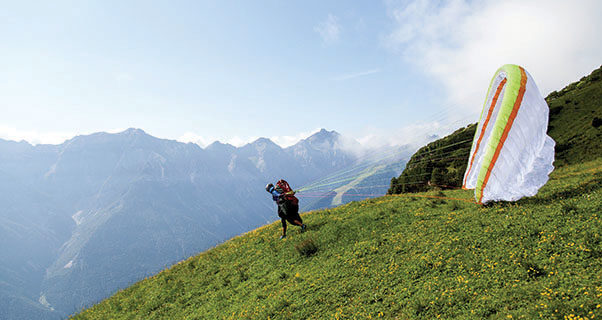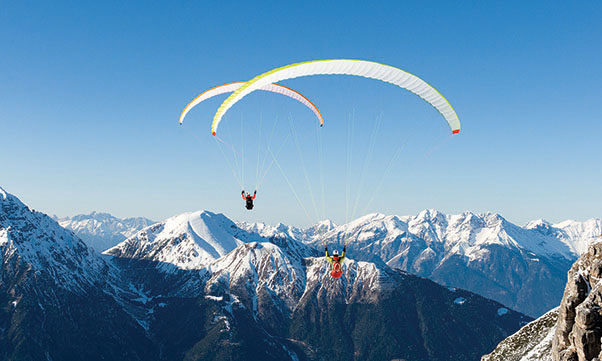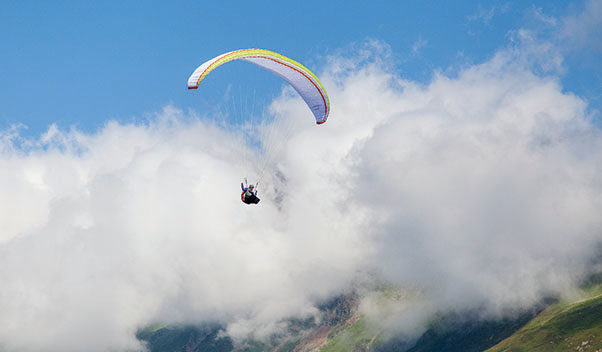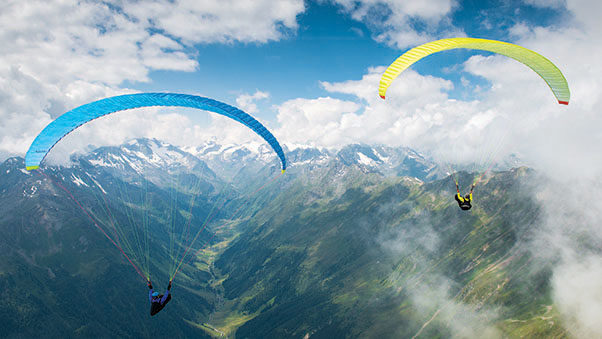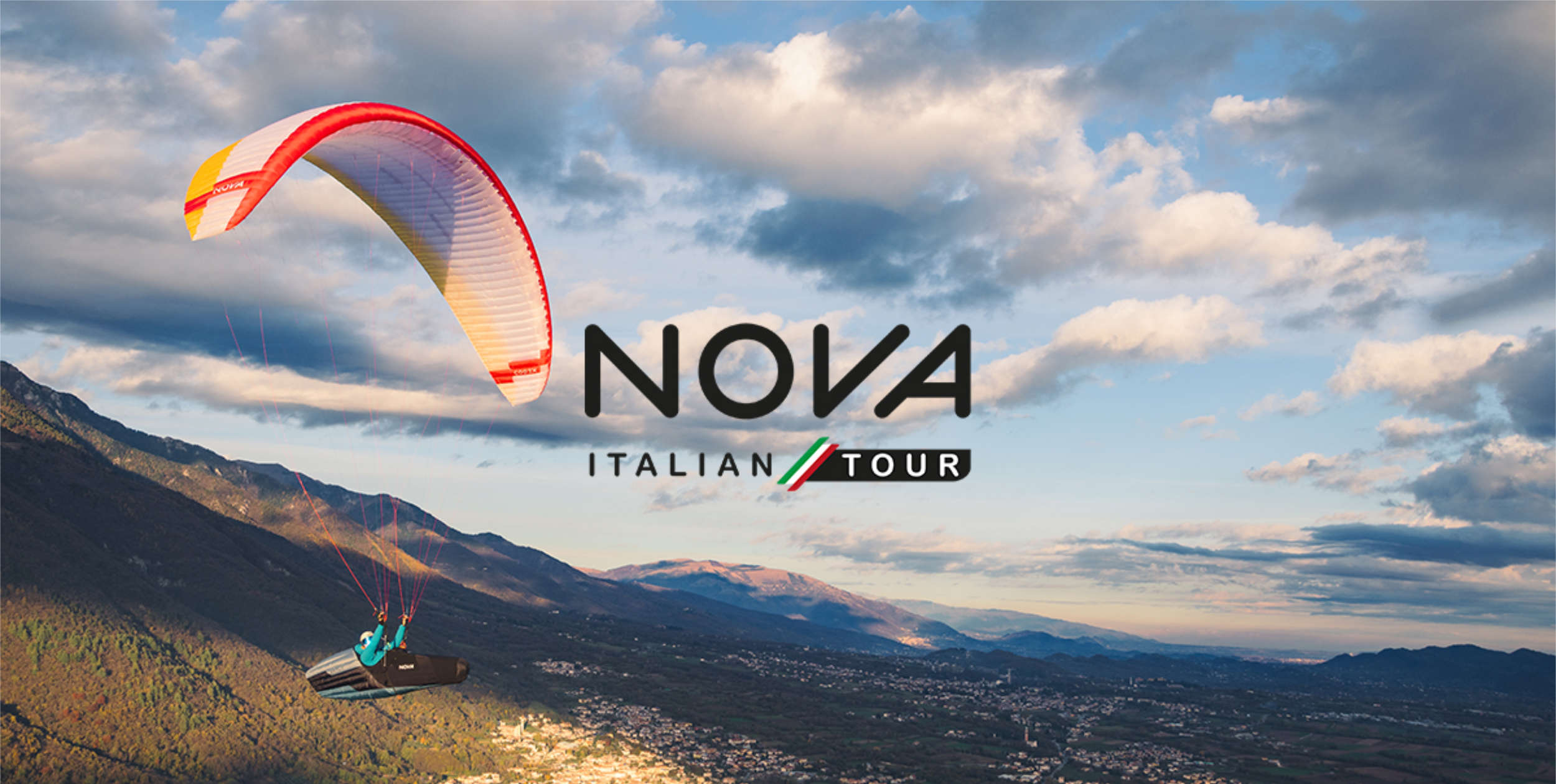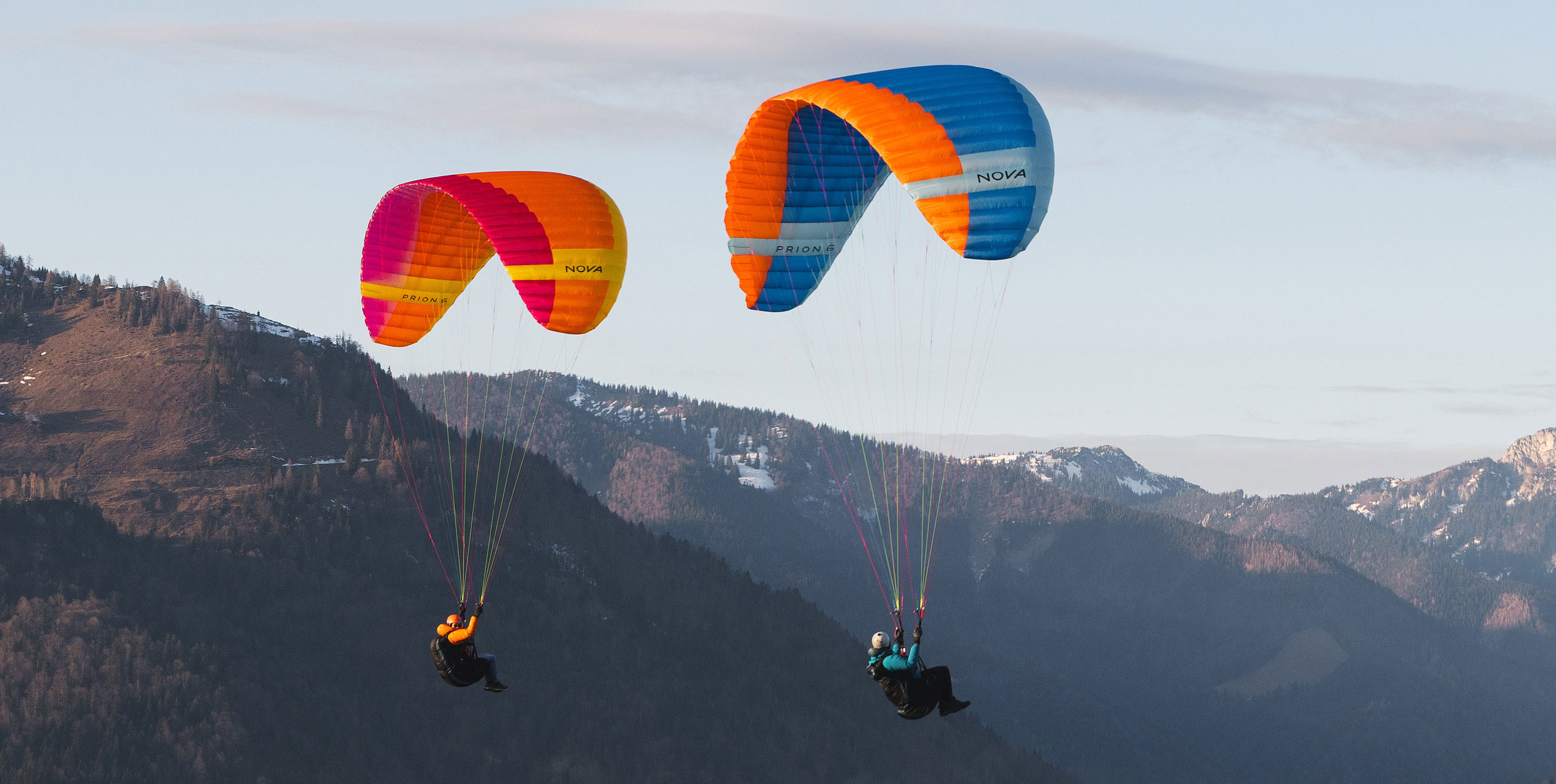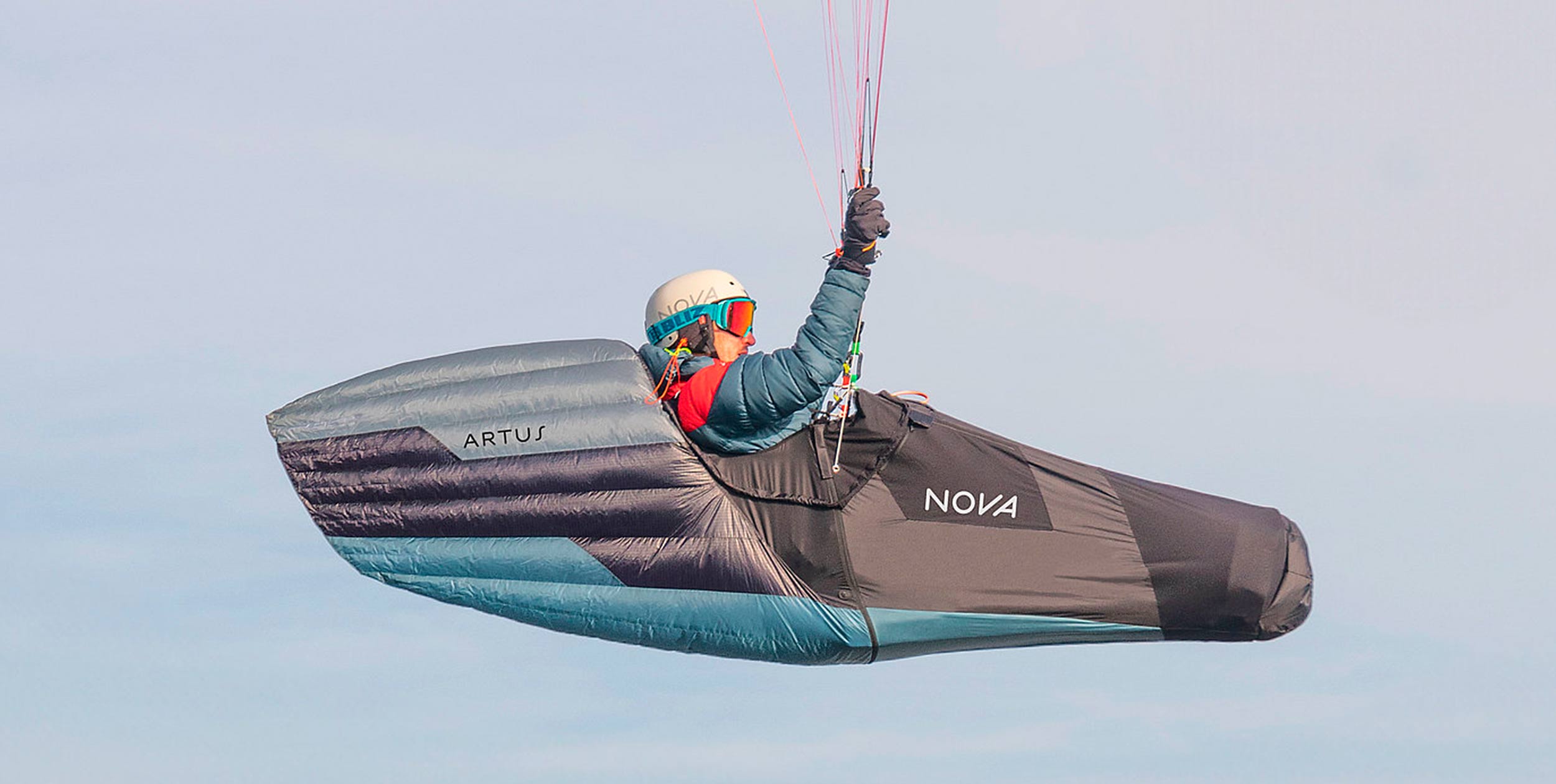Till Gottbrath talks risk, joy, fear and honesty – an appeal for reflection
All paraglider pilots know it – we have the most beautiful hobby in the world. But most of the time I am not able to explain to non-pilots why I am so fascinated by it. I feel it would always be best if they could experience it for themselves. But that is not always possible. So I try to find the right words… why do I fly?
My motivation to start paragliding in the first place had little to do with flying. I was a mountaineer. Like so many pioneers I succumbed to the vision that I would climb a mountain and on arriving at the top would unpack my wing and minutes later I would be gently floating down into the valley. I wasn’t so much drawn to the flying as the ‘not having to walk down’. All flying dinosaurs from that era had to discover that we were indulging ourselves in a pipe dream. Scalable mountains just do not have grassy slopes that face the right wind direction at the summit…
Instead I experienced something different: that indescribable sense of taking off and flying. To this day, I cannot describe the physical sensation. It has to be experienced.
And then there were the risk, fear and respect aspects. It is important to judge the danger and your own capabilities and then reach the right decision. To fly or not to fly? It’s not simple these days. And in those days it was even more difficult because nobody had any experience – including paragliding instructors.
Paragliding was booming and anyone who couldn’t run fast enough was made an instructor. When I registered with a school after my initial self-taught flying attempts, I had already done more flights than my instructor. And whoever purchased a wing was covertly more or less given a license with it.
With a bit of luck and some common sense I survived this wild time without any kind of crash. But looking at it another way, it was a good way to learn: from the beginning I was responsible for my own decisions. Anyone learning today does so with well-trained instructors who can use the 25 years of experience we have gained in the sport. Now, when the school pilot takes that all-important step to self-determination they get a good feeling: “What I am doing is my choice!“
Chasing the glory
Another motivating factor in paragliding – for life in fact – is the desire for recognition. In my early mountaineering/flying days this desire was of little importance. But it didn’t take long until I was basking in the admiration of my non-flying climbing friends: “Yeah, Till has got guts…” I really did like that and I am sure that it is more or less significant for many pilots. And it will always be the same, that’s just how people are.
As gliders rapidly gained performance, paragliding boomed too: slowly we could talk about “flying”. And that fed our desire for airtime. First to stay in the air for half an hour, then an hour, three hours and even longer. I still remember how I broke through the six-hour barrier. I was so keen to achieve this that I was silly enough to soar back and forth on the Wallberg in Bavaria for the required time without ever getting above the peak. At that time I had no knowledge of thermic flying.
But after that I belonged to the elite group of six-hour pilots. I couldn’t prove it though. GPS, online XC leagues, etc didn’t exist then. But I felt fantastic and it was brilliant in the evening to explain over a beer how I did it and how I even wet myself…ha ha ha. I was just so cool.
We also expressed this coolness by wearing as loud and fluorescent clothing as possible. Another embarrassing fashion I felt I had to follow. When my wife saw my old slides she briefly considered divorce…
High performance
Gliders got better and slowly we learnt about flying in thermals. This opened up the possibility of cross-country flying – for some earlier, for me a little later. Whoever wanted recognition now no longer needed to stay up for a long time, but to fly as far as possible.
And the performance difference between the benign beginner wings and the high-end wings was huge. Some of the wings we flew in those days skirted the border between genius and insanity, but without a high-performance wing you were back on the ground rather too quickly. Plus, having a high-performance wing spoke volumes: “Look, I’m no longer a beginner. I’m the man!”
My flying ability and the demands the wing made on me were diametrically opposed. I was regularly scared witless – but I could never admit that to anyone. If you’ve got guts, you can’t be scared. But at least I had enough intelligence to often take the brave decision not to take off in the first place…
Then about a decade ago something wonderful happened: there were wings that, despite their high passive safety, had enough performance to fly cross-country. It became more and more apparent to me that I could fly further with a low classification wing than on a hotship. The high-performance wing took so much of my attention that my ability to concentrate was severely affected: I would make a crucial error and was on the ground. I kissed goodbye to the attempted FAI triangle. I am not saying that I don’t still make mistakes – but I make them less often, later and sometimes not at all.
In those days, the hotship pilots would sometimes look down on DHV 1–2 pilots in the landing field: “Hey, kiddo, today we let you play a little bit too.” That doesn’t happen these days! A lot of very good pilots have realised that they can fly far on an EN-B wing – full of joy and while being absolutely relaxed – and they prove this regularly.
Flying an EN-B glider is now socially acceptable, because only very few pilots are capable of keeping their concentration and controlling a high-end wing for 10 hours on an epic day.
This development has also made something wonderful possible: the amazing feeling of elation when you close a triangle alongside your mates after a long cross-country flight. When one after the other wafts into the landing field and the smiles are so big they hardly fit under the helmet… this shared happiness used to be rare; now it massively enhances my flying enjoyment.
Success stories
Of course a low-end wing can collapse, but the majority of us pilots are safer in the air on lower class gliders than on high-performance wings. It means we have more success than horror stories.
Some of the world’s best cross-country pilots are in the Nova Pilots Team. As the team manager I might be accused of pushing these pilots to fly as far as possible on Nova’s orders. But it’s just the opposite! Of course it is great that the Mentor has been dominating the EN-B class for years, but what is important to us at Nova is that our team pilots really enjoy flying and share this passion with others. Enthusiasm is more important than results! A great flight doesn’t have to be a record-breaking flight.
We also encourage them to deliberately and demonstratively walk away from a take-off if the conditions are not suitable. Wolfgang Sattelegger, a world-class hang glider pilot and well known to many pilots as the owner of the kiosk at the main take-off at the Emberger Alm, Austria, paid us a real compliment some years ago. It was as it is so frequently: weather forecast is good, launch is full of people but unfortunately the wind is north.
Despite iffy conditions the first pilots braved the take-off. There were ‘only’ low level collapses but no accidents and a few more lemmings took off. Every second take-off was a near miss. At some point we were convinced that it wouldn’t be a good cross-country day. And the dangerous launch conditions did not justify the already doubtful enjoyment of a north wind flight on the Emberger Alm.
Wolfgang Bernhard, Hannes Kronberger, Mario Mayer, Hans Tockner and Micha Pohl – all excellent cross-country pilots – packed up and left the take-off. When we had a beer with Wolfgang Sattelegger that evening, he said: “I was so grateful that you guys left. It caused other pilots to admit that the conditions were dubious. And because some of the team pilots had already packed up, others could do the same without losing face.”
The previously mentioned Wolfgang Bernhard later told me: “Do you know why I feel so comfortable in the Nova pilots team? If I land early because it’s too rough for me and I later admit I was scared, I get acceptance.” Fantastic! I consider this statement to be as gratifying as the dominance of EN-B wings. I am definitely one of those pilots who has great respect for the risks in paragliding. And sometimes I am scared.
Therefore I try to avoid those situations. Isn’t it better if we don’t give approval to those who although brave, stupidly put themselves in danger, but instead give it to those who have the courage to admit that they would prefer to land or not take off in the first place?
Less focus on performance, but more joy of the basic experience of flying and more honesty with ourselves is good for the whole flying community. That way we can all have beautiful experiences – whether in the air or on the ground. And after all, that’s what it’s all about, isn’t it?
This article was first published in Cross Country 171 (July 2016). Till Gottbrath manages the Nova Pilots Team and Nova Juniors. If you enjoyed this sample article, perhaps you’d consider subscribing and supporting the world’s only international free flying magazine?

